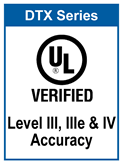Accuracy - DTX CableAnalyzer
|
Are you are after information as to why your DTX CableAnalyzer is reporting the result with an asterisk? Accuracy is the difference between the measured value reported by the field test equipment and the actual value. Accuracy is a function of the characteristics of the field test equipment as well as the transmission characteristics of the cabling. Minimum performance levels have been identified for level IIe, III, and IV field test equipment. Each accuracy level has it own set of performance requirements. There is no such thing as Level IVe, not even in draft.
Class F is often called Category 7, which is technically incorrect. In ISO/IEC the components or rated in Categories, but the links are rated in Classes. Field testing of Class FA stops at 600 MHz as per IEC 61935-1 Ed.3.
|





